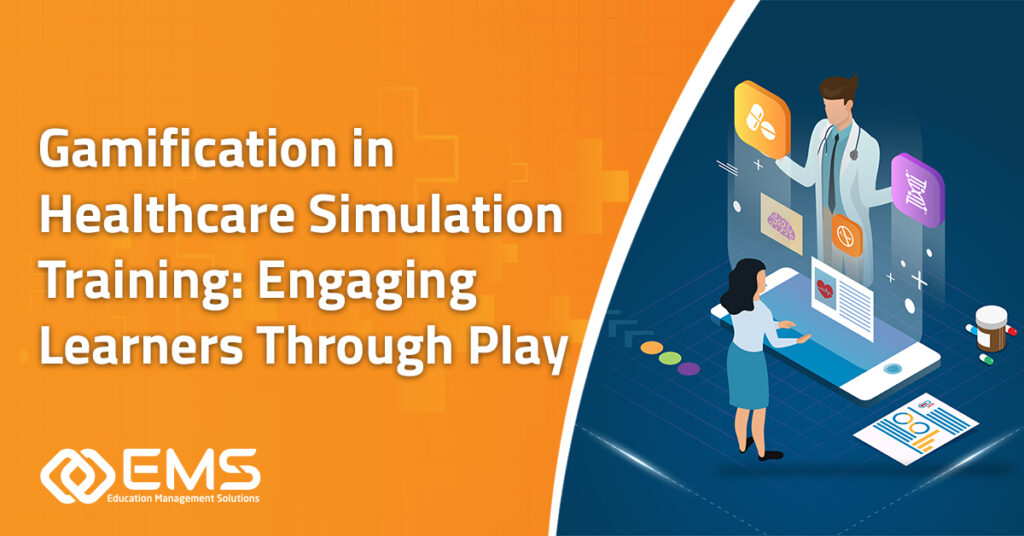As healthcare practices continually evolve, training methodologies must rise to meet the growing complexity of clinical environments. Ensuring learners remain engaged is critical—not just for knowledge retention, but for fostering competency in high-stakes care giving scenarios.
Gamification, the use of game mechanics and elements like leaderboards, challenges, and rewards, offers transformative potential in healthcare simulation training. By integrating gamified strategies into well-designed simulation environments, institutions can drive learner engagement, sharpen skills, and ultimately improve patient outcomes.
The Science Behind Gamification: Why It Works
Research consistently underscores the value of gamification in learning environments across industries, including healthcare. A meta-analysis in Educational Technology Research and Development found gamification significantly enhances motivation, engagement, and retention when paired with effective design principles1. Specifically, healthcare professionals would benefit from interactive, immersive experiences that foster active learning—key components of gamified training approaches.
Game design elements, such as point systems or mastery challenges, mimic structural motivators from gaming and behavioral psychology. These mechanisms tap into intrinsic motivation, fostering resilience and a desire for continuous improvement. For educators and administrators, the result is not merely theoretical—it translates directly into measurable learner performance and increased ROI in institutional training programs.
The Role of Gamification in Healthcare Simulation
Clinical simulation environments are uniquely suited to accommodate gamification techniques, especially when integrated with robust simulation management platforms. Here’s how specific gamified components enhance the simulation experience:
1. Leaderboards Drive Motivation and Collaboration
Ranking systems, such as leaderboards, encourage learners to strive for excellence, creating friendly competition and increasing overall performance outcomes. In multi-disciplinary teams, this fosters collaboration, as competitors push each other to refine their skills. In learner progression tracking software, customizable leaderboards allow institutions to tailor metrics to align with specific competency goals—connecting rankings to demonstrated proficiency rather than simple task completion.
2. Badges and Rewards Reinforce Achievements
Gamified healthcare simulations utilize reward mechanisms, such as badges and certificates, to signal milestones in skill acquisition. These tangible markers of success incentivize trainees to persist through challenging scenarios, helping sustain engagement.
3. Scenario Progression Mimics Game Levels
By structuring healthcare simulation training into progressive “levels,” learners are motivated to master foundational skills before advancing to higher more complex proficiencies. Simulation management platforms allow administrators to craft scenarios that escalate in difficulty, ensuring learners develop competencies systematically. A controlled environment using gamified progression can even simulate crisis management scenarios—helping healthcare practitioners prepare for time-sensitive decision-making under pressure.
Real-World Benefits of Gamification in Healthcare Training
1. Enhanced Learner Engagement
Gamified simulations are proven to increase focus, motivation, and skill mastery compared to traditional lecture-based methods. Learners retain more information and demonstrate greater competency in simulated scenarios2.
2. Time and Cost-Saving Tools
Gamification doesn’t just energize learners; it also makes training more efficient. For educators, automated tracking features such as point allocation and performance dashboards reduce manual grading time.
3. Scalable Solutions for Diverse Audiences
Healthcare systems and higher education institutions face varying training demands. Gamification tools, integrated with simulation solutions, are scalable to accommodate diverse learners—from nursing students to seasoned practitioners. This helps educators leverage their training infrastructure across multiple departments without compromising quality—and without straining budgets.
4. Improved Long-Term Knowledge Retention
With gamified simulation design, learners revisit key concepts and apply them in carefully crafted challenges. This cyclical learning approach reinforces critical skills, improving retention rates and ensuring practitioners remain prepared for real-world applications.
Future-Proofing Healthcare Training
As gamification continues to gain traction in healthcare and education, its application through strategic simulation environments will become a cornerstone of effective training methodologies.
Whether you’re a higher education institution preparing nursing students, a healthcare system onboarding new clinicians, or a government body training emergency workers, EMS provides customizable simulation management and capture tools that turn learning into actionable results. Contact an EMS solutions expert today to learn how you can leverage our more than 30 years of healthcare training experience to your advantage!

